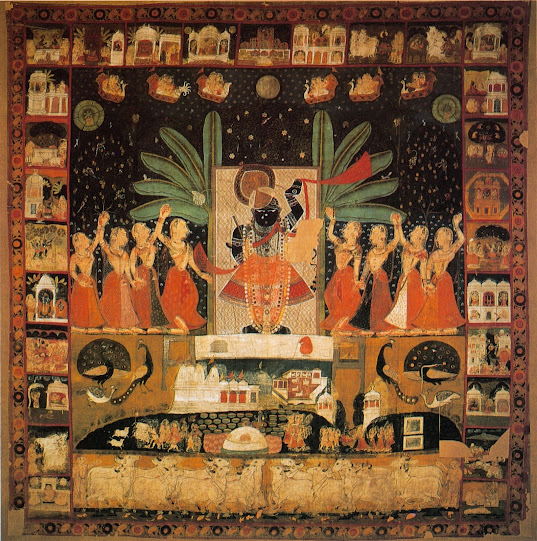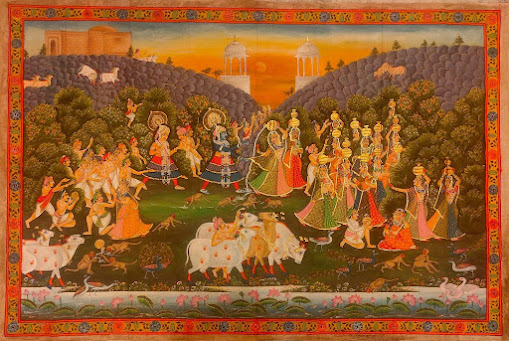Pichhwai
(Krishna (Shrinathji) and the Dancing Gopis. Pichhwai from the Temple of Nathdwara)Pichhwai is an art of intricate and resplendent painting on cloth depicting the saga of Lord Krishna’s life. It originated in Nathdwara in Rajasthan. This art delineates intricacies of each episode of Krishna’s life. The Pichhwai is a rectangular piece of cloth which ranges in size from a small towel size to the size of a quilt. It is generally hanged behind the idol of the deity.
The word Pichhwai comes from 'pichh' meaning back, and 'wai', meaning textile drapery. Traditionally they are made by the adherents of Pushti Marg, founded by Shri Vallabhacharya in the 16th Century. Originally, Pichhwai paintings were used to embellish the temple of Shrinathji in Nathdwara. It was being hung behind the deity on auspicious occasions and to celebrate various seasons, festivals and events interwoven with Lord Krishna's life.
Artists
developed different styles of depicting the stories related to Krishna from his
early childhood to his Raas Leelas with Gopis and playing flute in the meadows
of Mathura among cow herds.
(Krishna with Gopis in Raas Leela a beautiful eclogue)
With the passage of time, Pichhwai found a place in the homes of art connoisseurs because of its visual appeal. Like several other traditional Indian art forms, the art of Pichhwai is also dying, and requires recognition much for its survival.



